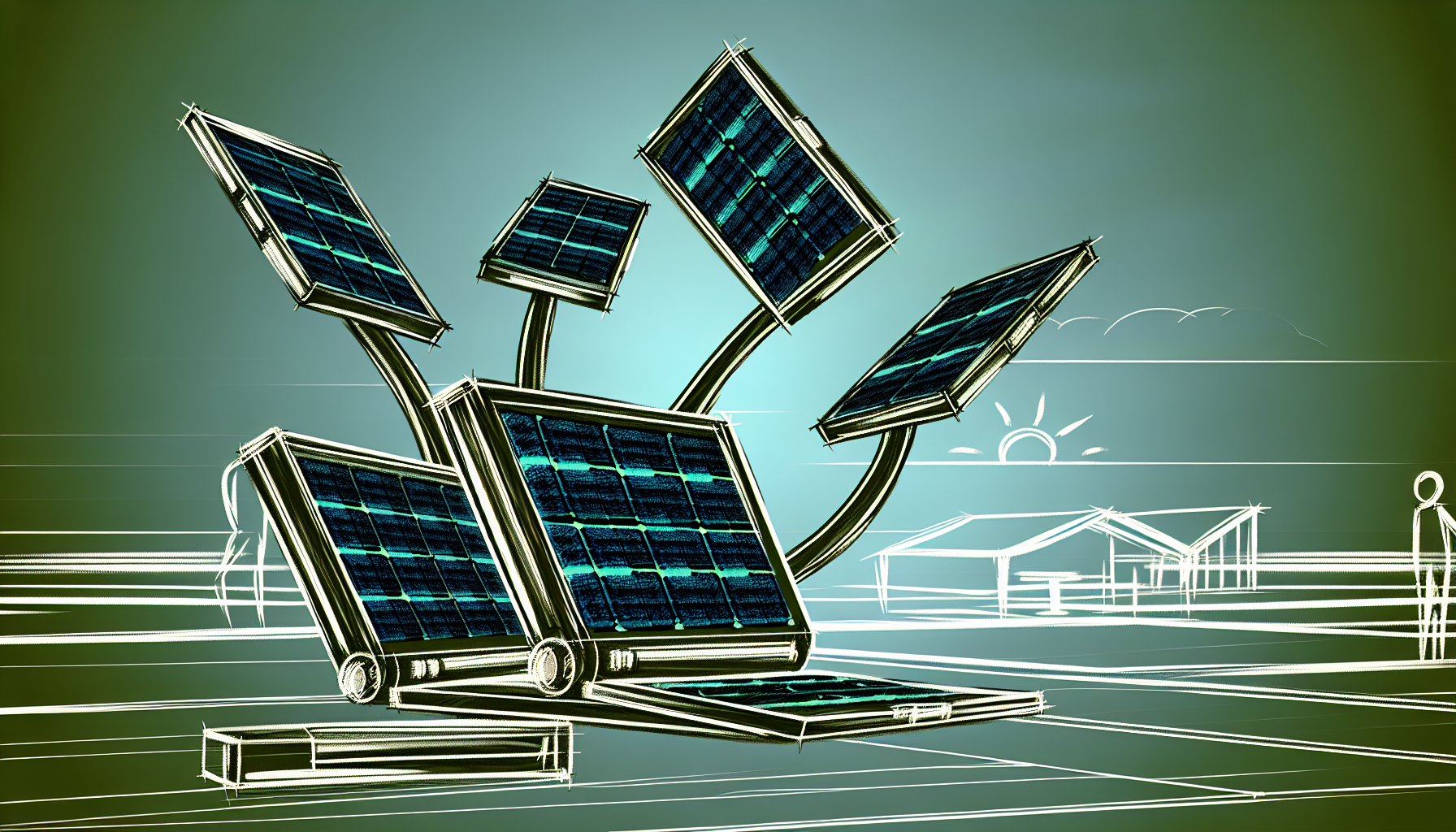# Lenovo's Dual Innovations: Solar Tech Meets Multi-Screens
In an era where technology continuously evolves to meet both the demands for increased productivity and sustainability, Lenovo has recently unveiled laptop concepts that are nothing short of revolutionary. These prototypes not only aim to enhance user experience through innovative design but also emphasize energy efficiency by integrating solar panels. Additionally, the incorporation of multiple screens promises to redefine multitasking capabilities. This comprehensive exploration delves into how Lenovo's latest designs could potentially set new standards in the tech industry.
Solar Integration in Laptops
#
Benefits of Solar Panels in Laptop Design
Integrating solar technology into laptops is a bold step towards sustainable computing. Solar panels can harness renewable energy directly from sunlight, reducing reliance on traditional power sources and enhancing portability. For users who often work remotely or in outdoor settings, this feature could significantly extend battery life, minimizing the need for frequent recharging from conventional power outlets.
#
Challenges and Technological Considerations
However, the incorporation of solar panels in laptops does not come without its challenges. The efficiency of solar charging is heavily dependent on exposure to sunlight, which can be inconsistent. Moreover, the aesthetic and structural design of the laptop must adapt to include solar cells, which might affect the overall weight and thickness of the device.
Despite these challenges, Lenovo's approach suggests a promising advancement in making solar-powered laptops viable. The design must ensure that the panels are both effective in energy absorption and seamlessly integrated without compromising the laptop’s functionality and user experience.
The Multi-Screen Advantage
#
Enhancing Productivity through Additional Screens
Lenovo’s introduction of extra screens on their laptops is aimed squarely at boosting productivity. By providing additional display real estate, users can manage multiple applications simultaneously without the need to toggle between tasks. This is particularly beneficial for professionals such as developers, designers, and analysts, who often work with complex software requiring ample screen space.
#
Market Context and User Adaptability
The concept of multi-screen setups is not entirely new, as seen in devices like ASUS’s ZenBook Pro Duo. However, Lenovo's implementation seeks to streamline user interaction and ergonomic comfort, making the technology more accessible and appealing to a broader audience. The challenge remains in ensuring that these screens can be integrated in a way that does not compromise the laptop's portability and battery efficiency.
Sustai
Looking to implement AI in your business? Our AI Automation Playbooks provide step-by-step guidance for seamless integration.
nable Tech and User Experience
Balancing eco-friendly technology with a seamless user experience is crucial. Lenovo's solar panels and multi-screen features highlight a commitment to innovation that does not detract from the usability of the device. The key is to integrate these technologies in a way that they enhance the laptop's functionality while also contributing to sustainability. This involves careful consideration of materials, design, and the overall lifecycle of the device.
Comparison with Competitors
When examining the broader landscape, Lenovo’s innovations stand out, yet they are part of a growing trend where tech giants are increasingly focusing on sustainable and user-centric designs. Companies like Apple and HP have also made strides in environmental technology, albeit more focused on recyclable materials and energy-efficient processes rather than direct solar integration.
The competitive edge for Lenovo lies in its dual approach—addressing both the environmental impact and the multitasking needs of modern users. The success of these features in the market will depend on consumer interest in sustainability and productivity enhancements, along with the company's ability to address the inherent challenges discussed earlier.
Further Reading
Expand your knowledge with these related articles from our experts:
- The Rise of Malvertising: How Ad Scams Compromise PCs - Dive deeper into technology insights
- Global Drone Markets: Asia's Skyward Surge - Dive deeper into technology insights
- Supersonic Silence: The XB-1 Jet's Quiet Breakthrough - Dive deeper into technology insights
- Brave vs. News Corp: A Landmark Case for AI and Copyright - Dive deeper into digital innovation insights
Want exclusive access to advanced insights? Check out our Pro Membership for premium content and tools. Members get 50% off all digital products.
Conclusion
Lenovo's latest laptop concepts, which combine solar power technology and multi-screen functionality, potentially mark a significant shift in the future of laptop design. These innovations not only cater to growing demands for sustainability and enhanced productivity but also set new benchmarks for what users can expect from their computing devices. As these technologies evolve and improve, they may become standard features in the laptops of tomorrow, influencing consumer expectations and pushing other tech companies to think innovatively about how they can meet the dual demands of energy efficiency and high performance in their products. Lenovo’s initiative could inspire a new wave of technological advancements that prioritize both the planet and the user’s needs.
